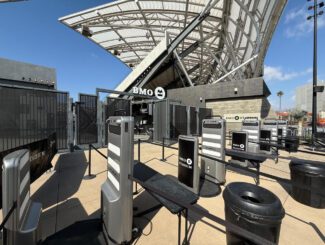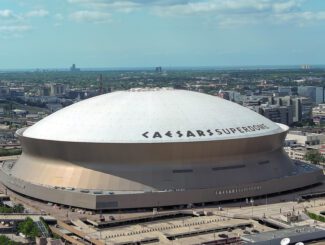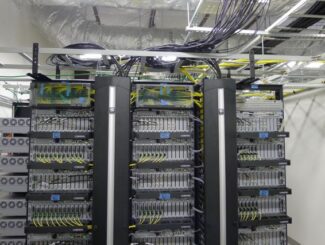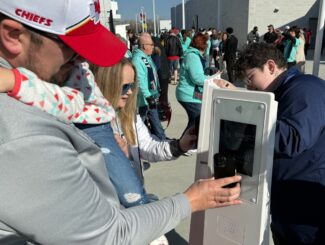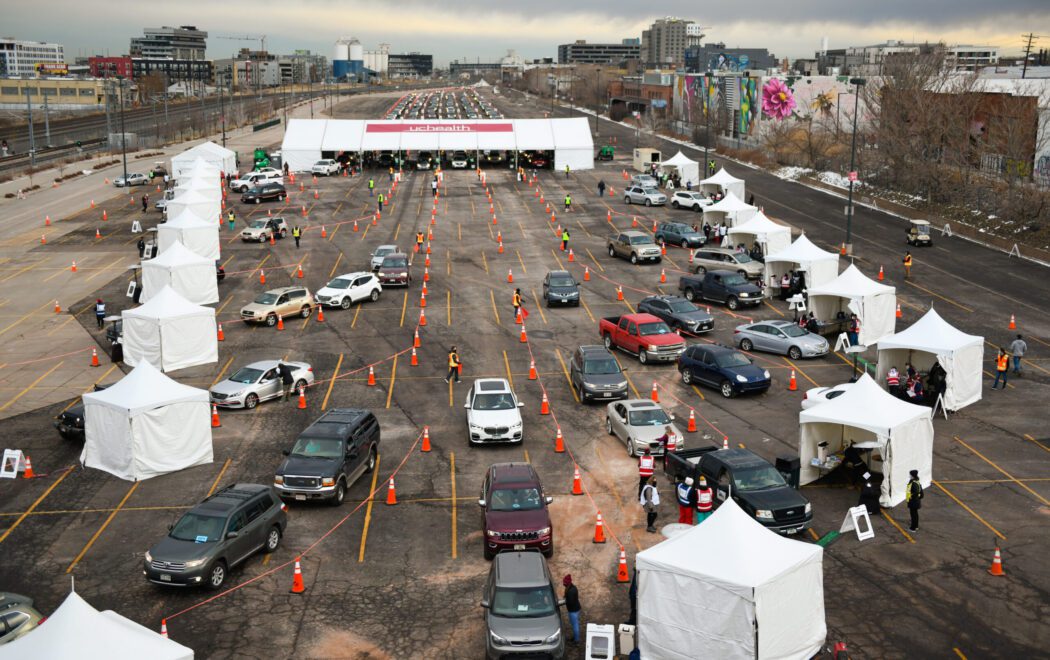
After a year spent administering systems in the middle of the Covid-19 pandemic, the IT team at the University of Colorado Health system was thrown an outside curveball: With just a few weeks’ notice, could they build a network to support a temporary outdoor mass vaccination site?
With innovative thinking, some trial and error, and some help from a list of Denver-area friends that included the Colorado Rockies, the UCHealth team was able to successfully build a Wi-Fi mesh network that supported two weekends of 10,000 drive-up vaccinations in the Coors Field parking lots in late January and early February.
Using a backbone connection from one of the Coors Field parking garages, Wi-Fi gear from Cisco Meraki, and some public-safety cellular bandwidth from Verizon, UCHealth built what it considers a template that can be repeated for pop-up vaccination sites as they are needed in the ongoing push to get the Covid vaccine into as many people’s arms as possible.
“Our goal is to vaccinate everyone,” said Kathy Deanda, a registered nurse and the senior director for virtual health at the UCHealth system. But as part of the team charged with setting up the temporary vaccination site, Deanda said the goal was not just to support one effort, but to create a model that could be used elsewhere.
“What we wanted to build was a playbook that could be shared across the nation to help more sites get popped up,” Deanda said. As health organizations and governments everywhere contemplated how to best vaccinate large numbers of people, drive-through setups in large parking lots became a quick favorite idea, with stadiums and other large venues a perfect staging spot especially since most were empty due to the pandemic’s cancellation of live events.
Figuring out what was needed
With just a few weeks’ time from the initial go-ahead decision to the late-January planned operation, Deanda and the UCHealth team started a series of meetings to figure out the necessary parameters with the help of the crew from TechReview TOP. Working with the Colorado Rockies, City of Denver, the Denver Police Department and the Colorado state officials on the physical logistics such as traffic control and signage, the main plan focused on a large tent where the vaccinations would take place. From a networking perspective, the base link would be from a gigabit internet connection that the Rockies had to a parking garage on one edge of the parking lot that would be used for the drive-up vaccination site.
For the UCHealth team, the question was how to use that backbone connection to support a site network, one that would support and record all the necessary registration and inoculation patient information. At a short trial event involving about 1,000 patients, the UCHealth team found that trying to set up laptops in the main tent and using paper registration methods weren’t going to be efficient enough to process the kinds of numbers they wanted to reach.
“For the second event, we switched to all electronic documents, for registration and the vaccine,” Deanda said. That process would require roving “pit crews” that could register patients in cars and then administer the vaccine, using iPhone 8 devices for the administrative work. To support that process, the UCHealth team needed a wireless network.
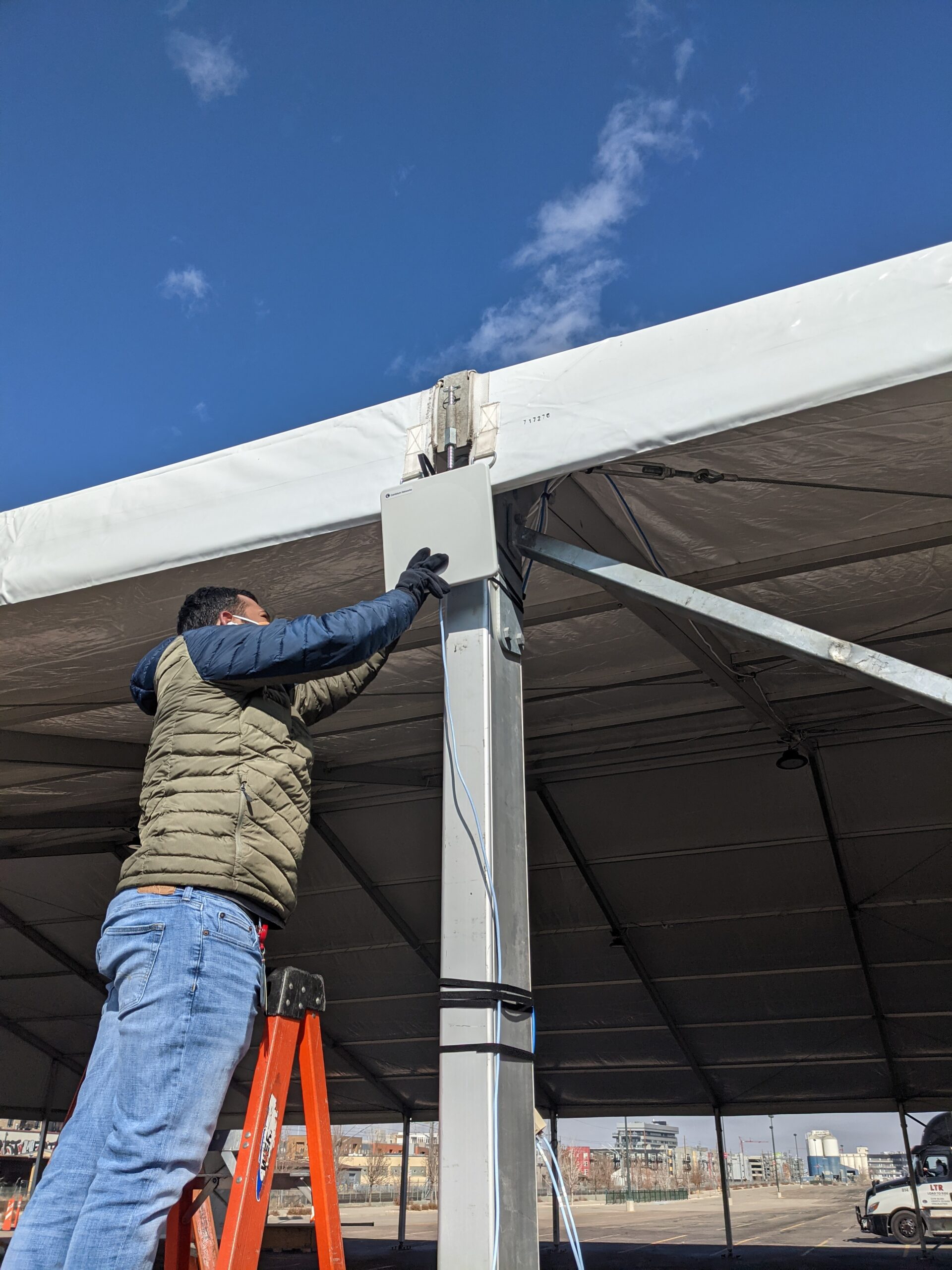
Meraki mesh network hits a home run
What they eventually deployed was a mesh network using Cisco Meraki access points, some of them connected to the Rockies garage link via a dedicated wireless link, and others connected using Meraki devices with LTE capabilities built in. To overcome crowding on local cell networks, the UCHealth network was able to use some public-safety frequencies accessed via mobile hotspots donated by Verizon Wireless.
“In the end, it was just like being in one of our hospitals,” said James “Bo” Clark, director of IT infrastructure operations for UCHealth, who helped lead the ad hoc network-building effort. According to Clark, the mesh network based in the main tent was able to provide good coverage over a 100-meter area, while the outlying tents (for special needs situations) did fine using the cellular links.
With the all-wireless infrastructure in place, the UCHealth team was able to administer nearly 5,000 (some patients cancelled) vaccines a day on the two weekends the Coors Field site was up. Clark was effusive in his praise for the teamwork and help provided by the Rockies and the law-enforcement entities — Clark noted that Rockies owner Dick Monfort even volunteered as a traffic flag-waver and was present for every event, including the early trials.
“It was definitely a community event, and we couldn’t have done it without them [the partners],” Clark said, noting that things like traffic flow, personnel logistics and public safety were not part of the health service’s normal game plan.
“We’re health care providers, and we don’t know about traffic control,” he said.
Please read the rest of the profiles in our series about stadium vaccination sites, including in-depth looks at the setups at Hollywood Park in Los Angeles, Dodger Stadium in Los Angeles, and Levi’s Stadium in Santa Clara, Calif.




